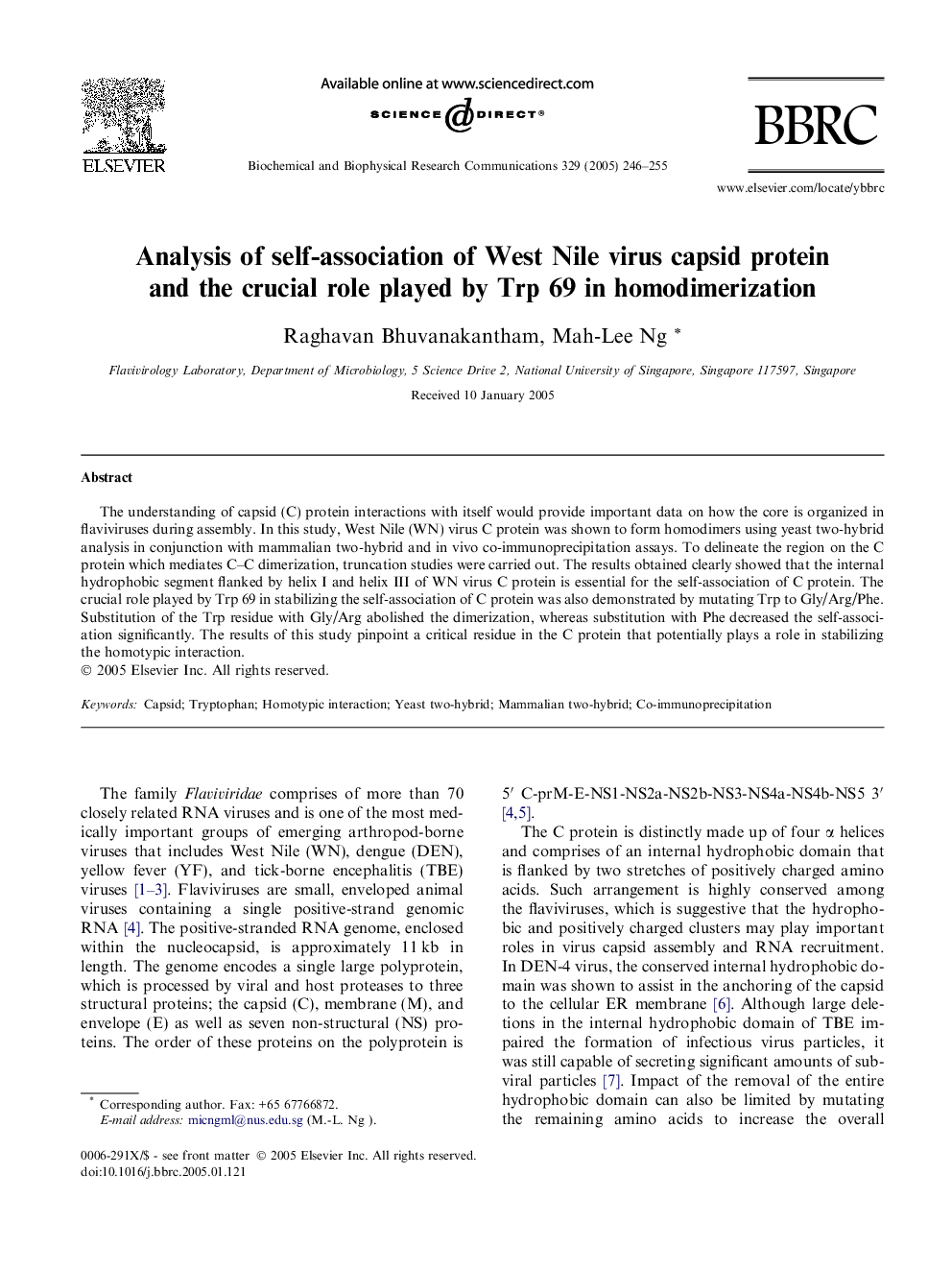| Article ID | Journal | Published Year | Pages | File Type |
|---|---|---|---|---|
| 10771794 | Biochemical and Biophysical Research Communications | 2005 | 10 Pages |
Abstract
The understanding of capsid (C) protein interactions with itself would provide important data on how the core is organized in flaviviruses during assembly. In this study, West Nile (WN) virus C protein was shown to form homodimers using yeast two-hybrid analysis in conjunction with mammalian two-hybrid and in vivo co-immunoprecipitation assays. To delineate the region on the C protein which mediates C-C dimerization, truncation studies were carried out. The results obtained clearly showed that the internal hydrophobic segment flanked by helix I and helix III of WN virus C protein is essential for the self-association of C protein. The crucial role played by Trp 69 in stabilizing the self-association of C protein was also demonstrated by mutating Trp to Gly/Arg/Phe. Substitution of the Trp residue with Gly/Arg abolished the dimerization, whereas substitution with Phe decreased the self-association significantly. The results of this study pinpoint a critical residue in the C protein that potentially plays a role in stabilizing the homotypic interaction.
Related Topics
Life Sciences
Biochemistry, Genetics and Molecular Biology
Biochemistry
Authors
Raghavan Bhuvanakantham, Mah-Lee Ng,
